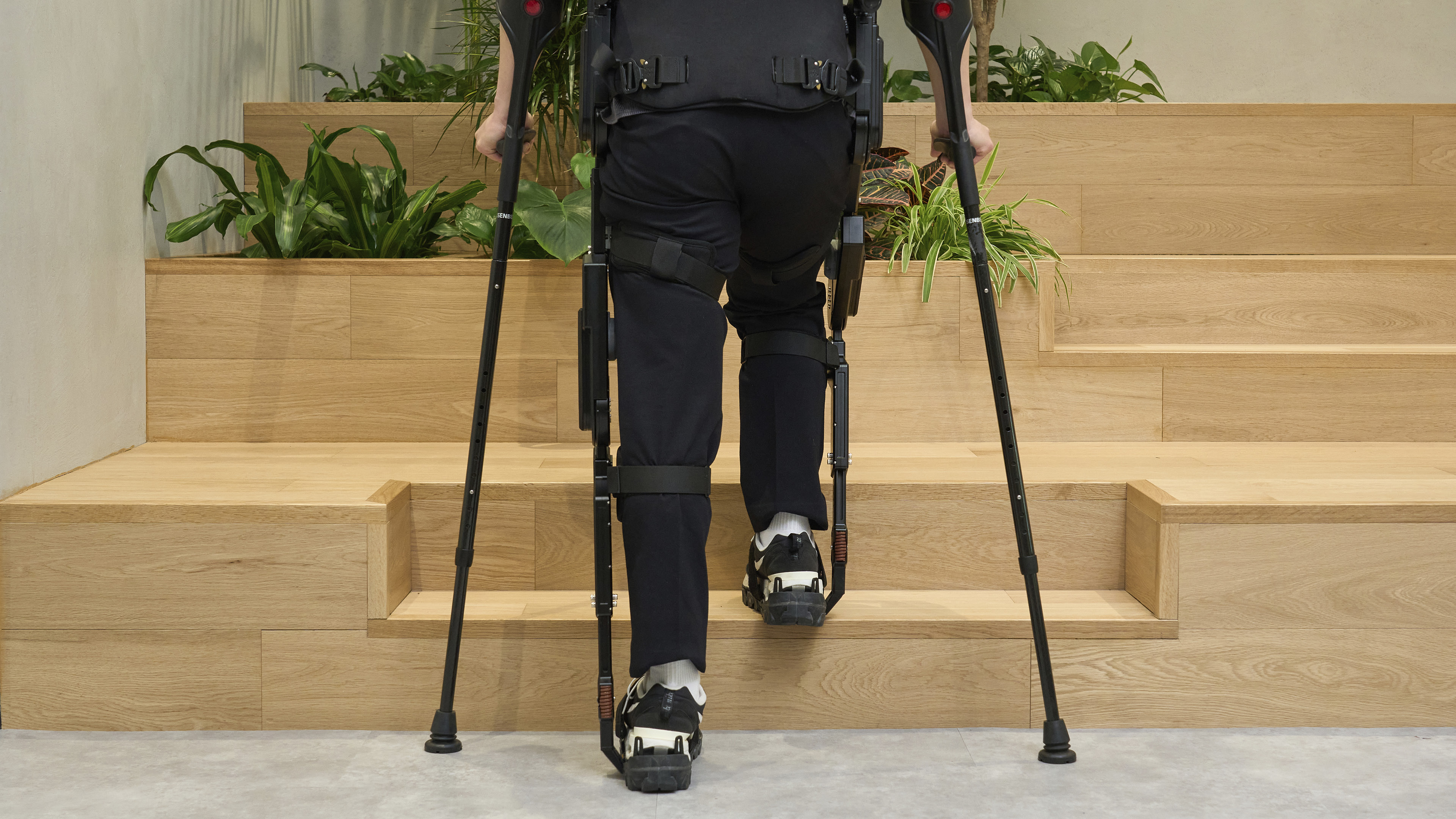
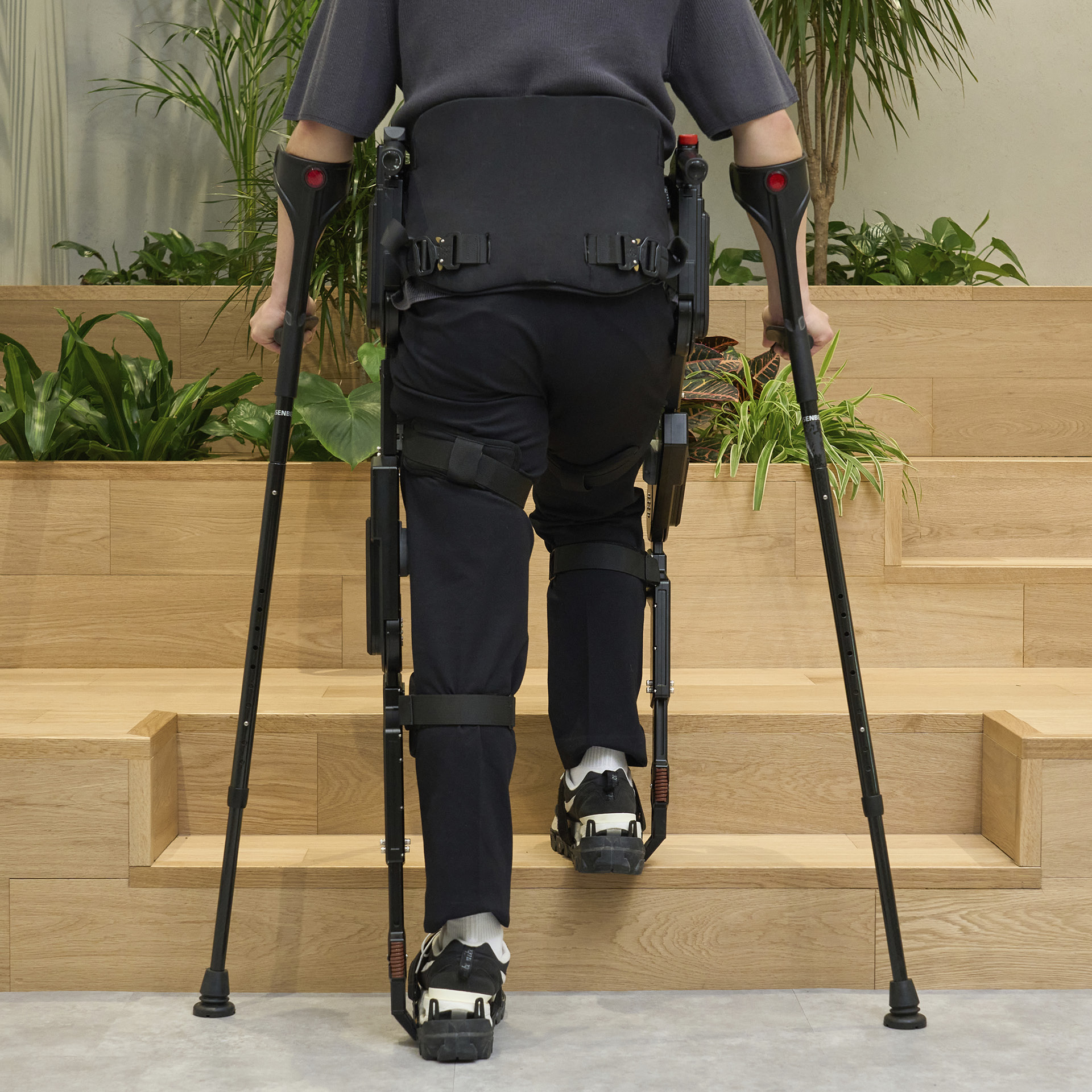


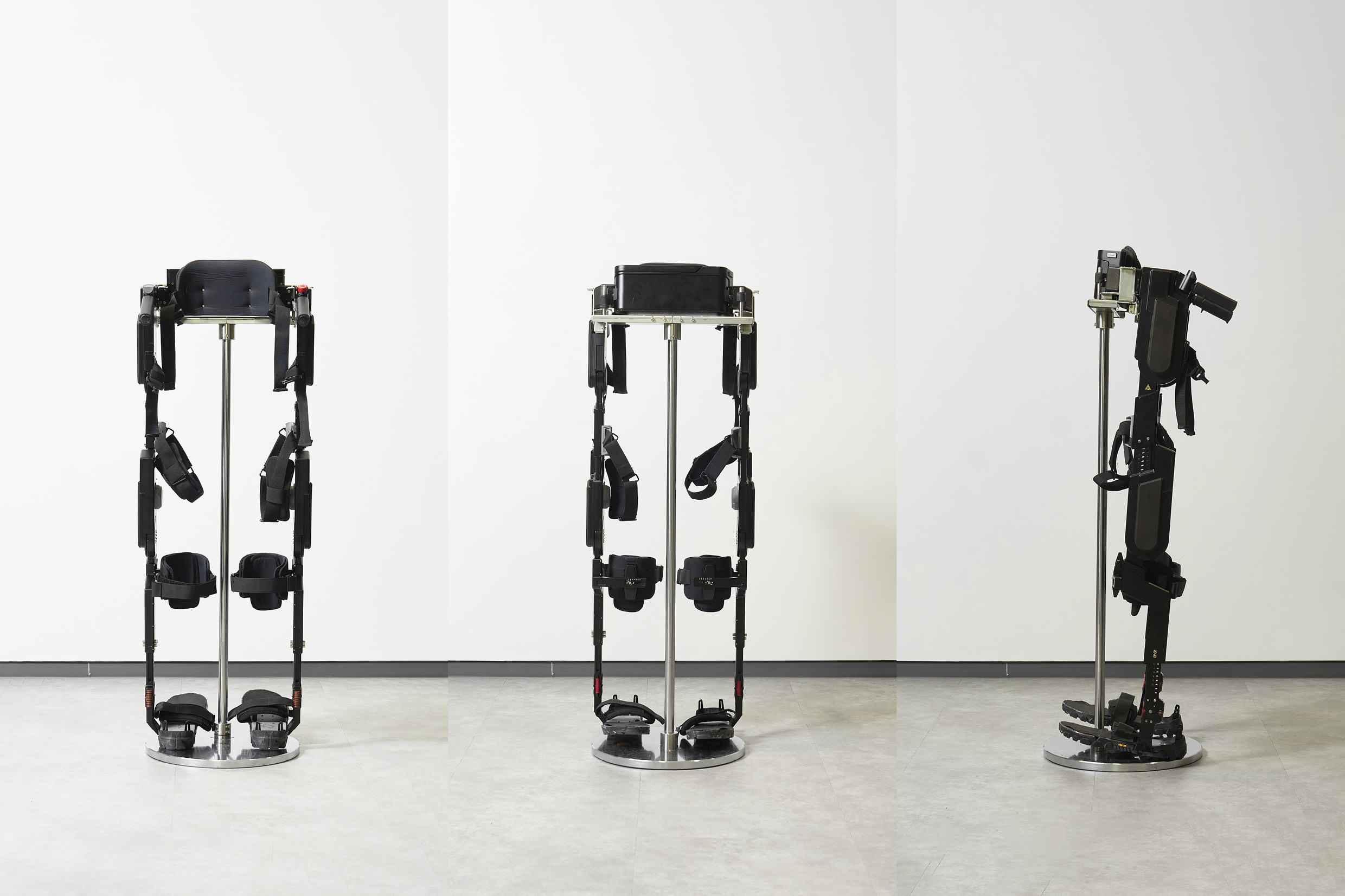
Hyundai Motor utilizes robotics technology to contribute to the extension of freedom in mobility. Hyundai Robotics Lab operates a walking rehabilitation program for patients with mobility impairments at Seoul Asan Hospital and the Korea National Rehabilitation Center, making use of its self-developed medical wearable robot, ‘X-ble MEX.’
X-ble MEX is a medical wearable robot designed to assist in lower limb muscle rehabilitation and joint movement for individuals with difficulty in walking. ‘X-ble’ is the wearable robot brand of Hyundai Robotics Lab, combining the letter ‘X,’ representing the infinite potential of robotics technology, and the suffix ‘able.’ MEX stands for Medical Exoskeleton.
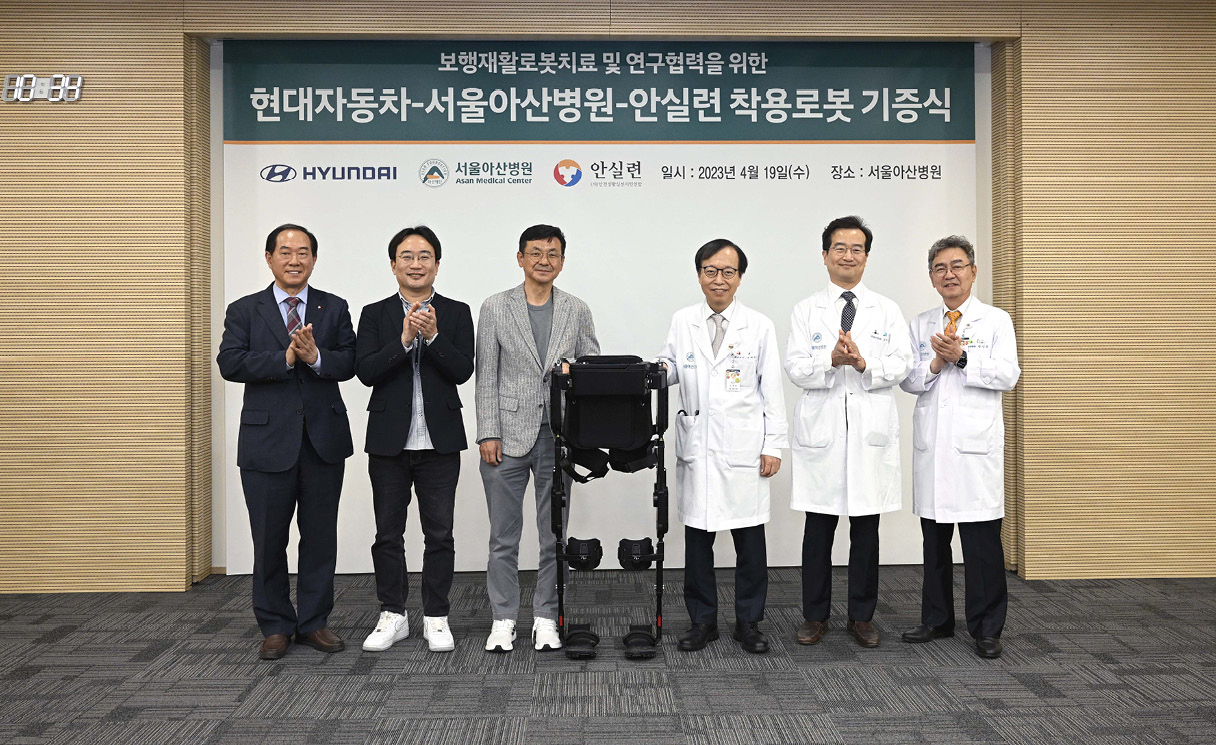
In the future, X-ble MEX will be deployed in the rehabilitation treatment and related research for lower limb paralysis patients at Seoul Asan Hospital and the National Rehabilitation Center. What kind of assistance can X-ble MEX provide to help patients overcome the limits of mobility? Researchers from Hyundai Motor’s Robotics Lab, who developed X-ble MEX, answered questions about its performance, features, and advantages in detail.
Q. What motivated you to develop X-ble MEX?
Design part leader Hyun-seop Eem | X-ble MEX is originated from Hyundai Motor’s brand philosophy, “Progress for Humanity.” Just as we contribute to the mobility of the public through our automobiles, we also developed X-ble MEX to improve the mobility of individuals with disabilities, such as lower limb paralysis. The Human Convenience Research Team, our predecessor, started development in 2015, and we have now perfected it.
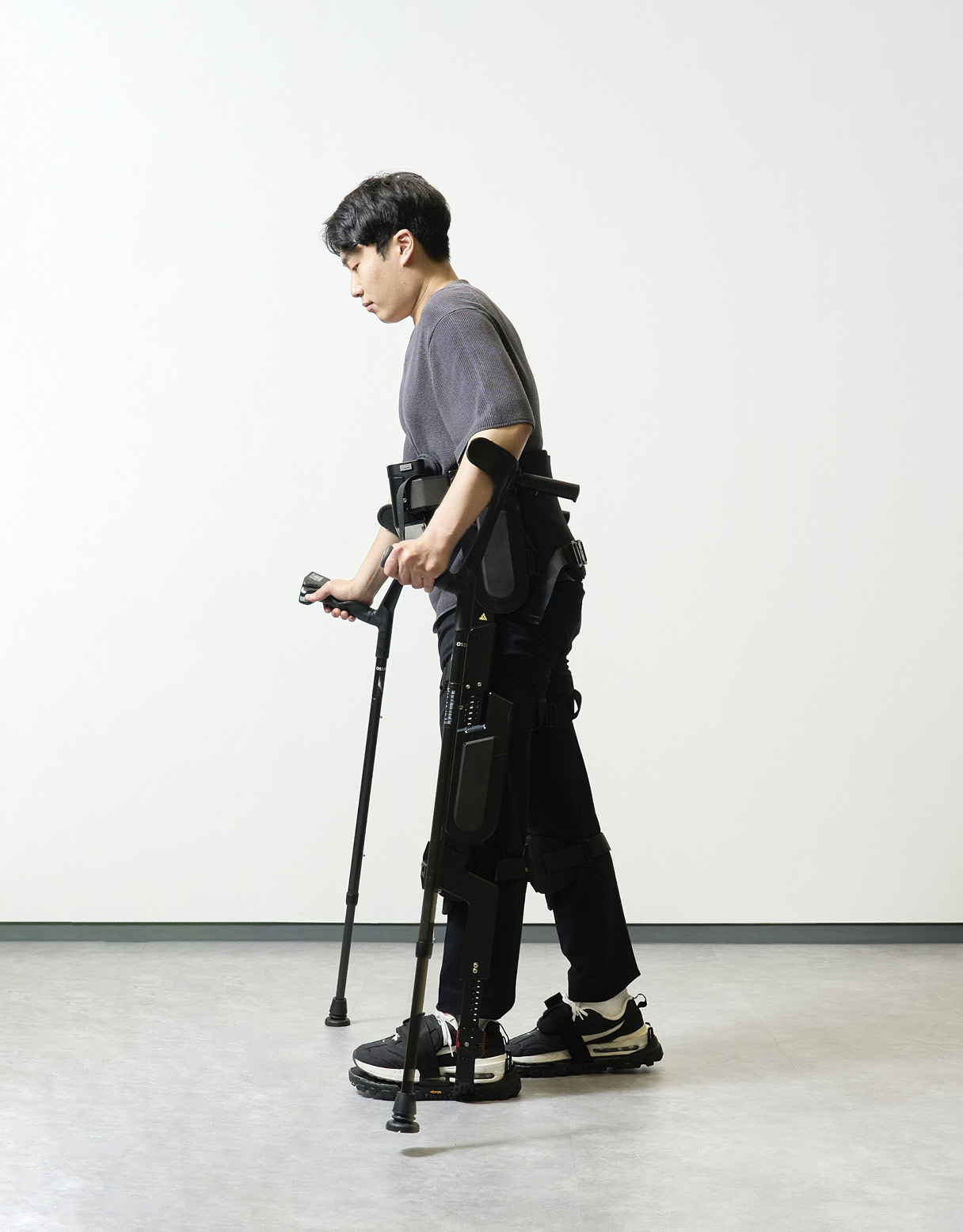
Q. What technologies were employed in X-ble MEX?
Senior Researcher Gyu-jeong Lee | X-ble MEX was made using proprietary technologies developed by Robotics Lab. Various technologies were applied to X-ble MEX, including modular actuator design, mechanism optimization, human interpretation and simulation, and biomimetic gait control.
Design Part Leader Hyun-seop Eem | X-ble MEX is the result of continuous research by Robotics Lab. Including the prototype, X-ble MEX is the third generation of the robot. The initial prototype focused on performance, aiming to closely mimic joint movements of the human body using eight motors. The next prototype focused on weight reduction, reducing the number of motors to six and overall weight. The current X-ble MEX consummated the technologies developed over three generations, and this is quite meaningful as it has four motors, using technologies for mass production, and achieving localization.
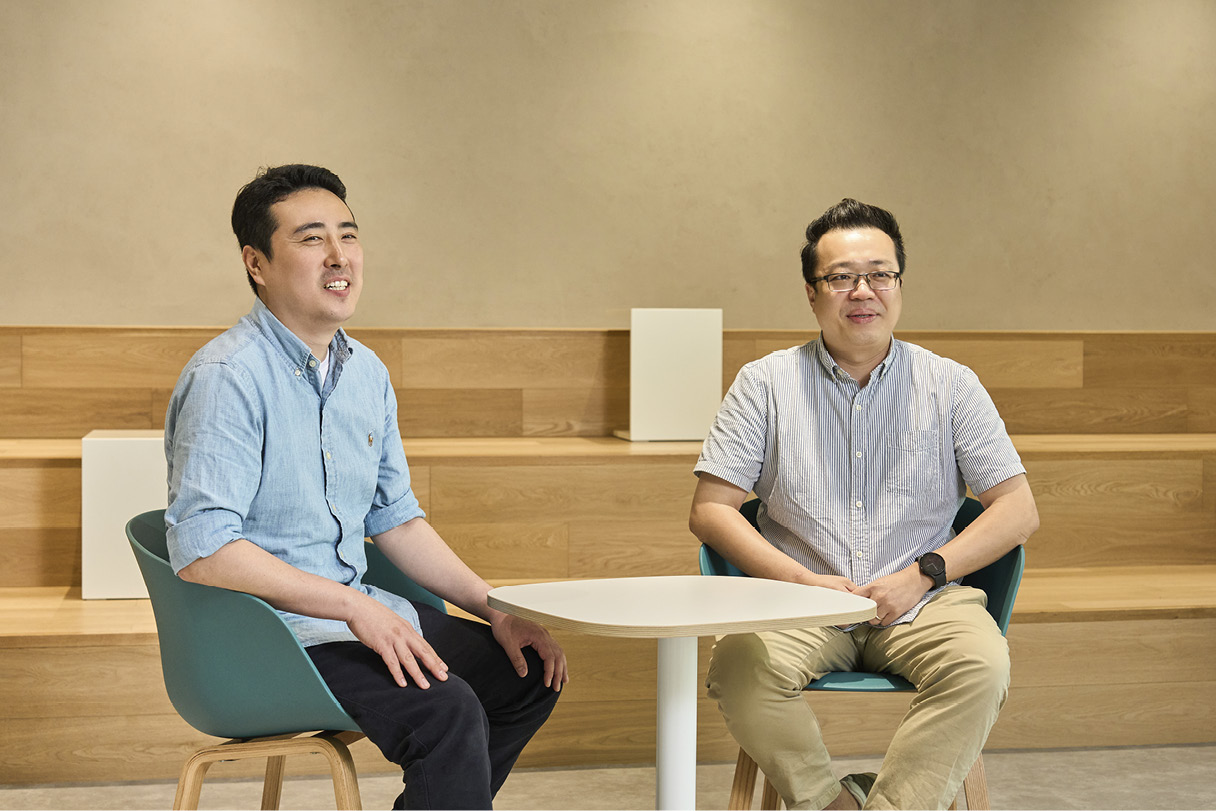
Q. X-ble MEX boasts a lightweight and thin size compared to other robots on the market. Please explain the benefits of these features.
Design part leader Hyun-seop Eem | X-ble MEX is designed to accommodate wheelchair users, making it considerably thin compared to other medical wearable robots. Since X-ble MEX is intended for the rehabilitation of lower limb paralysis patients, we put considerable effort into designing it to be safe and easy for them to wear and take off. For example, patients with lower limb paralysis would be able to sit in a wheelchair while wearing X-ble MEX. We didn’t use any special lightweight materials. To reduce weight, it is important to design efficiently with minimal components, similar to modules.
Q. X-ble MEX weighs only 18kg, which is significantly lighter than its competitors. How heavy would the patients think this is?
Senior researcher Gyu-jeong Lee | X-ble MEX has a structure where the patient rides on the robot rather than carrying its weight. Therefore, the weight distribution of the robot is close to the user’s center of gravity, hence a very minimal perceived weight. The advantage of this lightweight design extends to other aspects as well; when the robot is lighter, the load on the actuators is reduced, allowing for longer battery life with the same battery capacity. Additionally, therapists can easily assist patients in wearing the robot.
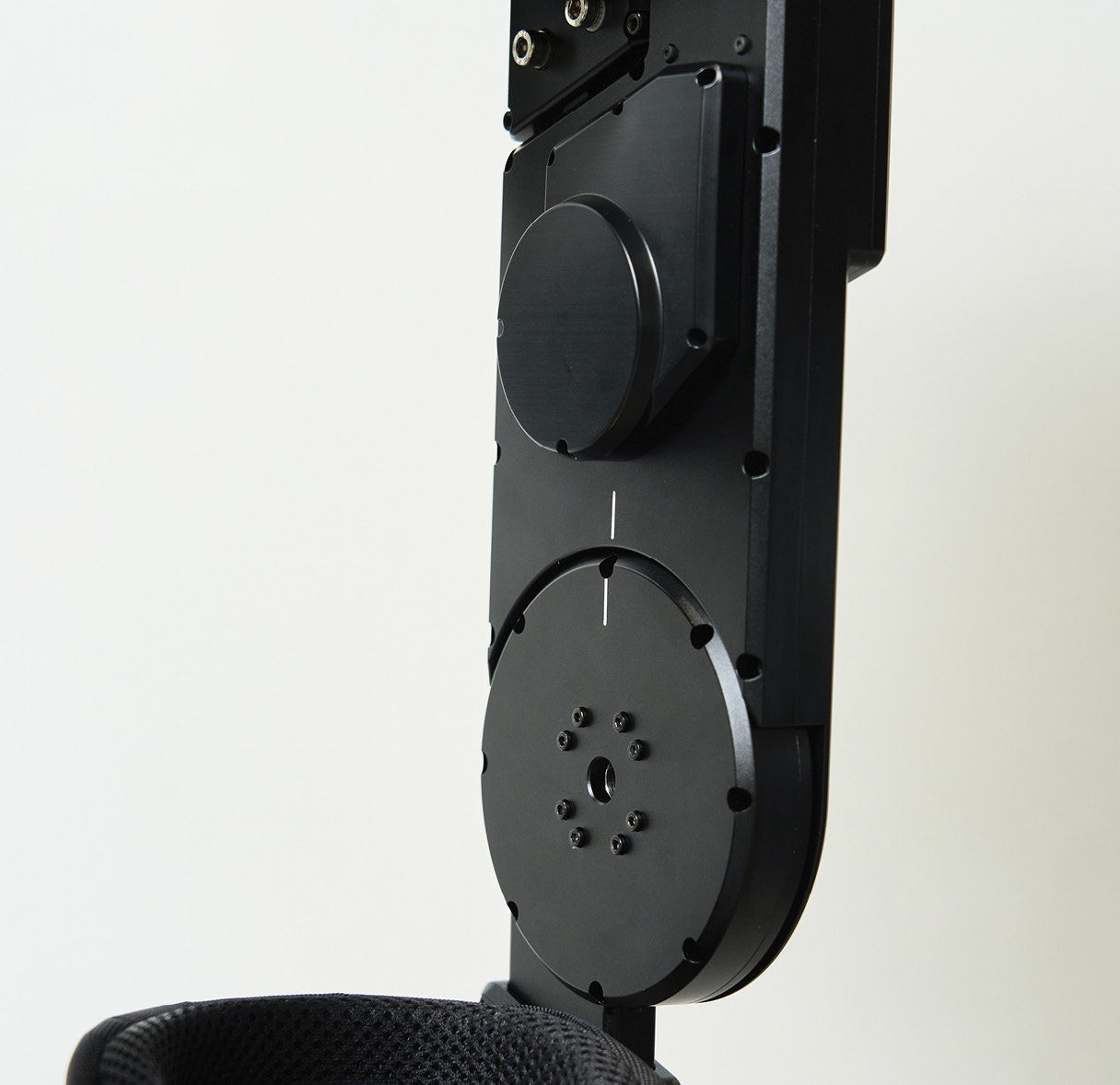
Q. What are the characteristics and advantages of the small modules used in X-ble MEX?
Design part leader Hyun-seop Eem | First, let me briefly explain the core of modular technology. We have placed all the components inside each module so that each one can operate independently. This requires technologies such as optimal component arrangement and miniaturization. Being able to develop such technologies all by ourselves was very important for this matter. Modularization has several advantages; using a single module for multiple body parts reduces costs due to economies of scale, and repairs become easier. When a problem occurs with the robot, it can be easily resolved by replacing the module specific to that part.
Q. Which part of X-ble MEX’s design focused on ergonomics?
Senior researcher Gyu-jeong Lee | To prevent users with spinal cord injuries from falling while wearing the robot, we designed it to have the user wear it while facing front, in contrast to other robots. This allows patients to easily wear it even while sitting in a wheelchair. Additionally, we ensured a stable configuration of the harness from the knee joints to the hip joints, enabling users to have a stable and upright posture. This structure helps align the user’s body with the robot’s joints and prevents incorrect wearing in awkward postures.
Patients with spinal cord injuries have no sensation in their lower limbs, making it difficult for them to perceive friction on the skin. Therefore, the harness is made of a soft material that does not cause friction injuries to the skin, and we have smoothed all parts to avoid scratches on the skin. Furthermore, the adjustability range of the waist and joint parts is finely tuned to fit all the patients with different body shapes, ensuring comfortable wearing.
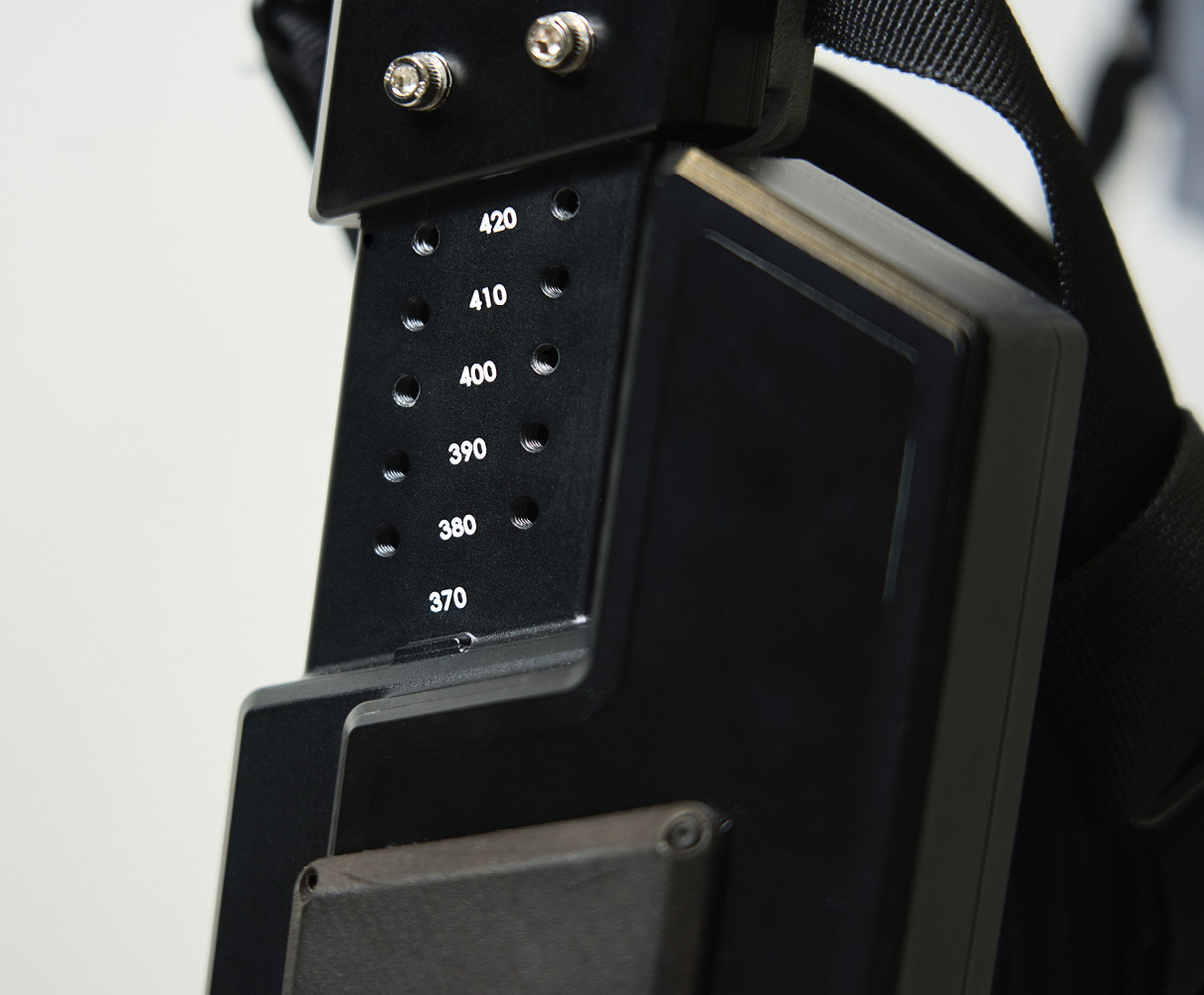
Q. What are the advantages of the design where X-ble MEX is worn looking at the front and has its main components in the front as well?
Design part leader Hyun-seop Eem | One of the advantages of X-ble MEX is that its center of gravity closely aligns with the user’s center of gravity. In previous prototypes, heavy batteries and control units were housed in the back side. However, clinical trials have shown that having the center of gravity in the front is more comfortable for patients and much better for walking. To shift the center of gravity forward, we continuously improved the essential miniaturization technology and applied it to X-ble MEX. In fact, when comparing the looks of X-ble MEX with those of its competitors on the market, the prominent difference is that the center of gravity of our product lies in the front.
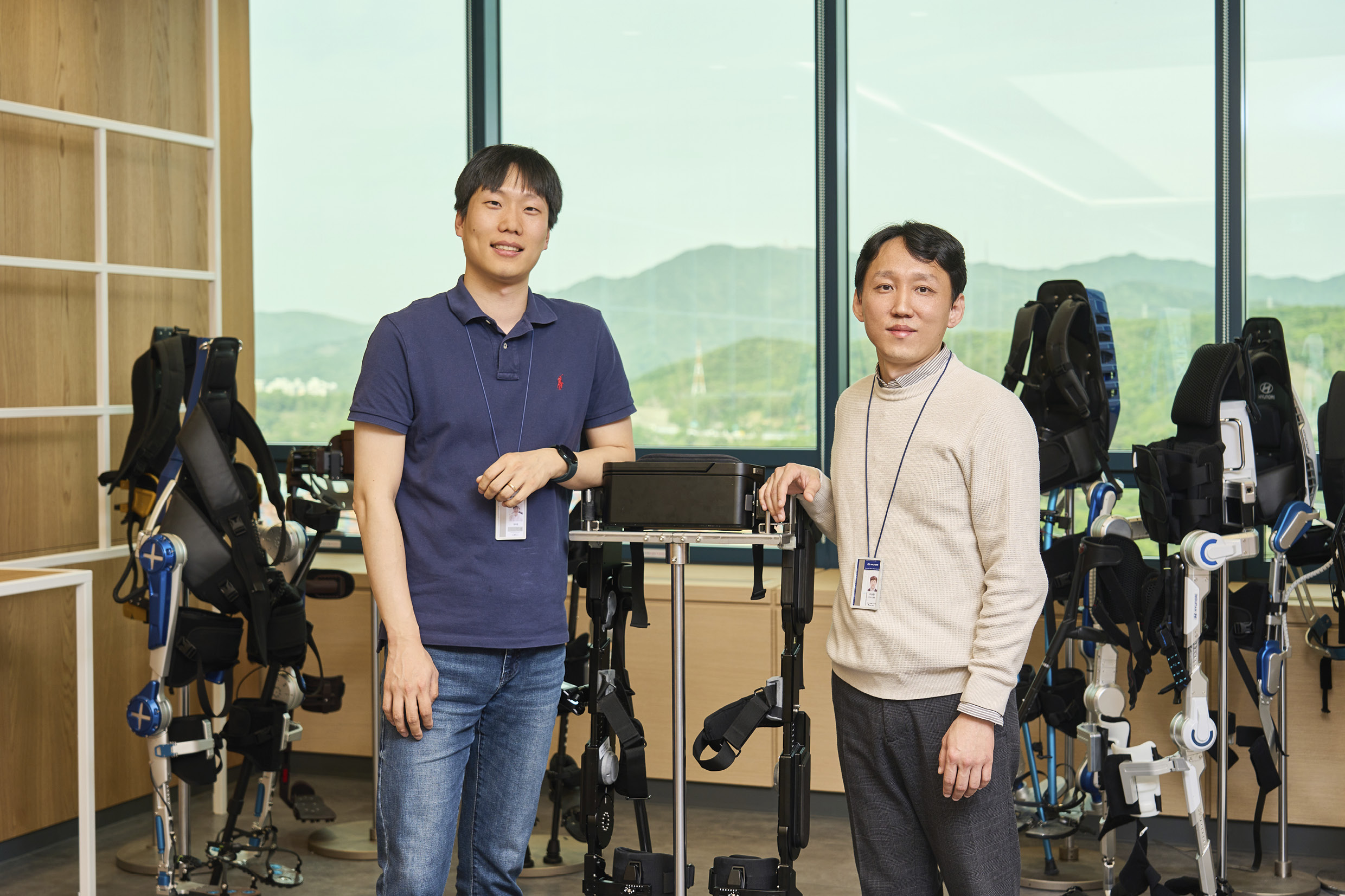
Q. What is the operating principle of X-ble MEX?
Process control part leader Dong-hyun Lee | X-ble MEX is a medical device developed for individuals with lower limb paralysis. It automatically generates walking trajectories based on the length of the patient’s thighs and calves, allowing the patient to walk naturally. Walking commands are controlled by buttons on the crutches equipped with a smart controller. Each press of the button moves the patient one step forward. X-ble MEX not only assists with walking but also supports various movements through a total of seven operating modes, including sitting on a chair and climbing stairs.
Q. What is the secret behind X-ble MEX that can walk so naturally?
Senior researcher Guk-hyun Aan | To achieve human-like walking, we meticulously analyzed and replicated the walking motion of humans. For example, when a person walks and extends one leg forward, unless the ankle moves at a specific angle, the heel touches the ground first. Then, as the center of gravity shifts to the front leg, the entire sole of the foot touches the ground. In particular, continuous walking involves a seamless connection of movements as each action leads to the next step. To implement this walking style in X-ble MEX, we conducted kinematic analysis of the relative movements of both legs.
Process control part leader Dong-hyun Lee | In simpler terms, it involves optimizing the movements through calculations. By performing kinematic analysis, we can calculate how each joint should move to achieve the desired walking trajectory. For example, inputting the length of the patient’s calves and thighs allows us to generate an optimized trajectory. To enable natural walking, various movements need to be interconnected. As the robot moves and the positions of each joint constantly change, it is essential to consider not only the positions but also the speed and acceleration, as they can affect the walking trajectory. The natural footsteps of X-ble MEX are the result of incorporating these precise calculations.
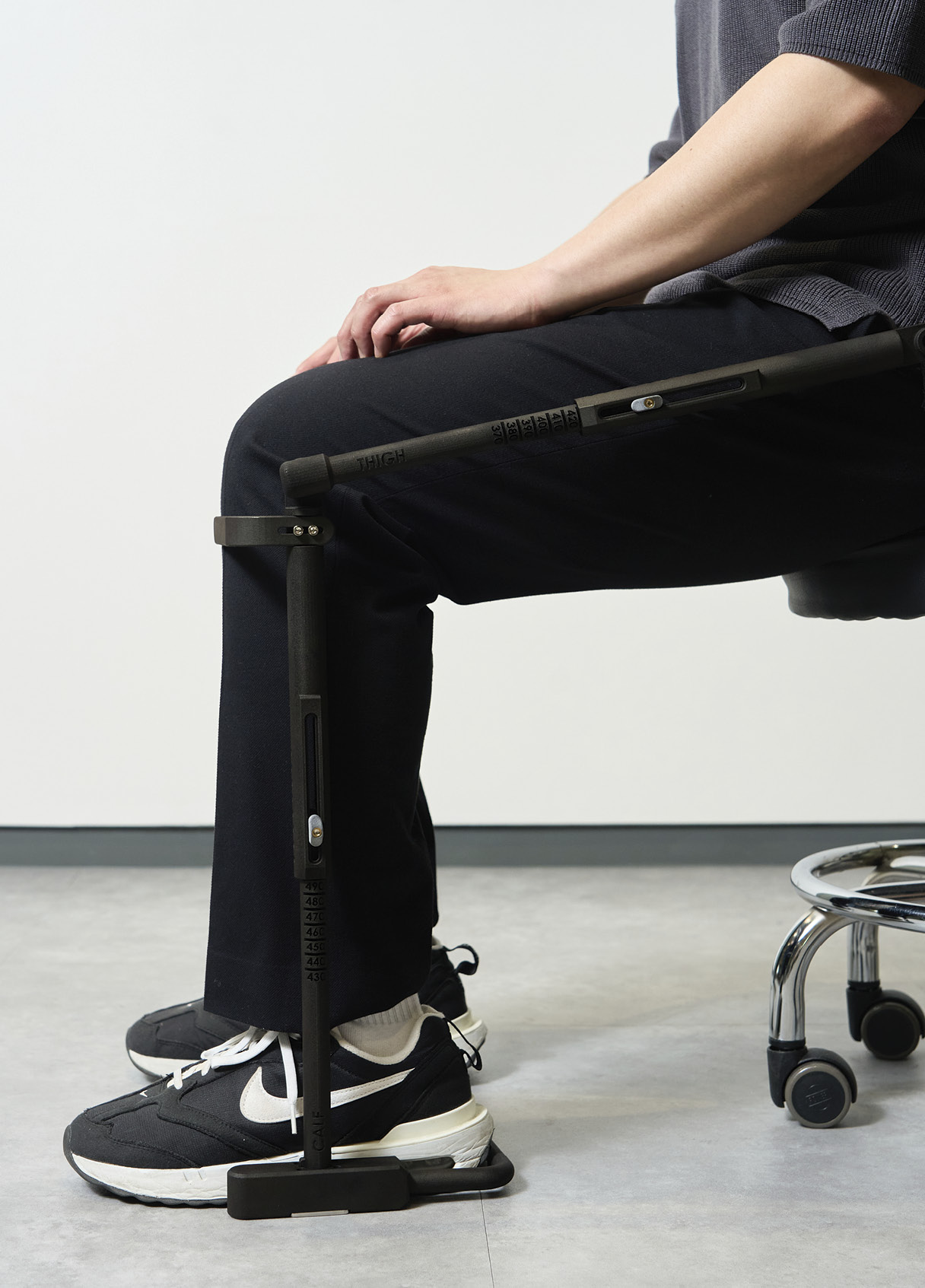
Q. Each patient’s treatment process may vary. How does X-ble MEX accommodate for this?
Process control part leader Dong-hyun Lee | X-ble MEX allows for precise adjustments of parameters such as stride length and walking time. This is one of the unique advantages of X-ble MEX. We have developed an application for therapists that enables them to modify detailed walking trajectories. For patients who are initially introduced to X-ble MEX, the stride length and walking speed can be set to slower values. As the rehabilitation progresses, therapists can adjust the speed and stride length according to their professional judgment. Unlike other robots on the market, X-ble MEX also allows for left and right turns.
Senior researcher Guk-hyun Aan | To ensure stable walking for patients with lower limb paralysis, the maximum speed of X-ble MEX has been limited to 1.2 km/h. The stride length of X-ble MEX can be set in increments of 3 cm within the range of 15 to 36 cm, and the time required for each step can be adjusted in increments of 0.1 seconds within the range of 1.0 to 2.5 seconds.
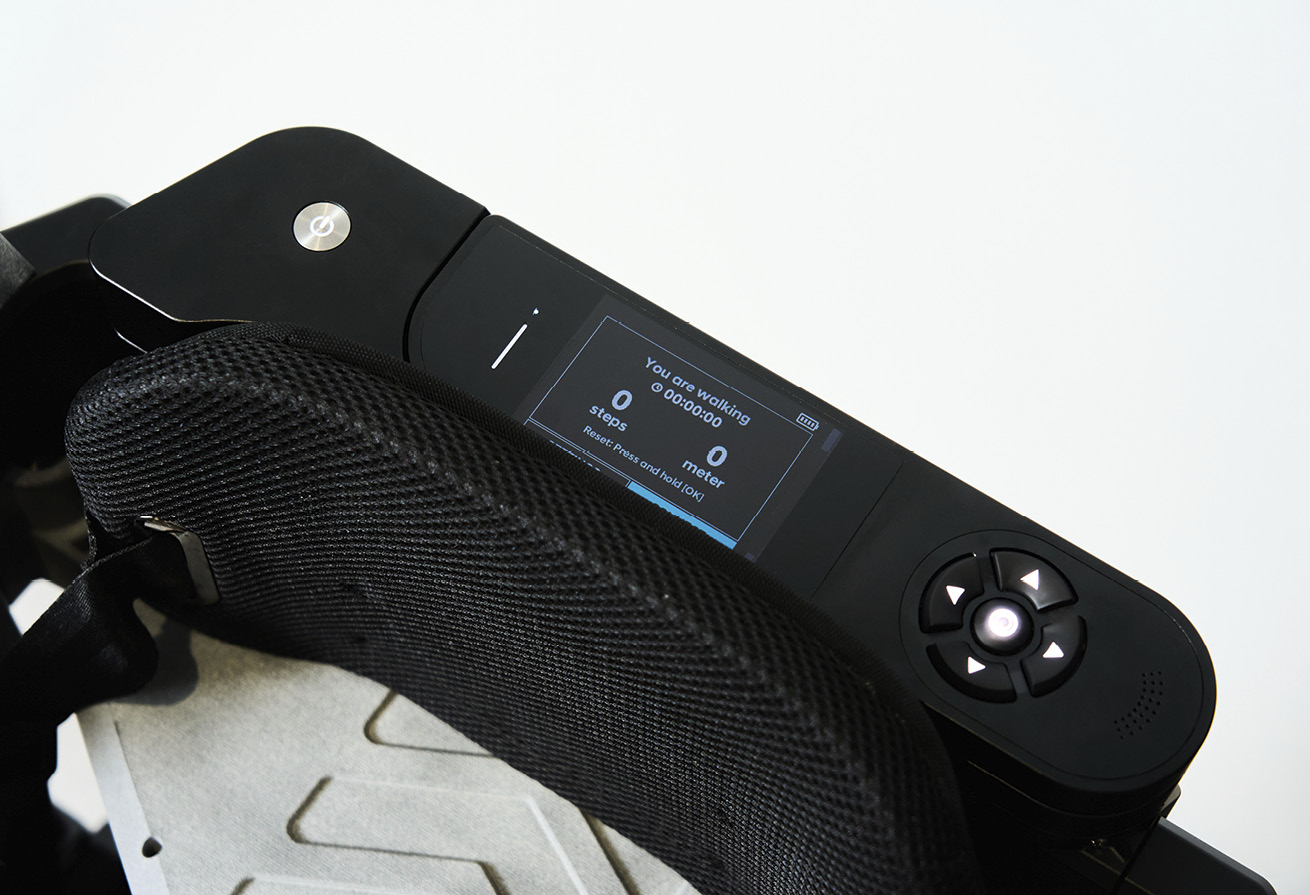
Q. How does it prevent accidents, such as falls?
Process control part leader Dong-hyun Lee | X-ble MEX is equipped with an IMU (Inertial Measurement Unit) sensor, which measures the orientation of movement. This sensor allows us to determine the walking posture and position of the center of gravity. When a patient falls, it indicates that the movement of the center of gravity during walking is abnormal. For example, if the center of gravity is not properly positioned on the front foot while lifting the back foot forward during walking, the wearer will tilt backward as soon as they lift the back foot.
X-ble MEX calculates the walking posture and center of gravity using the IMU sensor and suspends the execution of walking commands in unstable postures. In special situations, therapists can press the emergency stop button to halt the device. One difference between X-ble MEX and its competitors is the electronic brake system. The electronic brake, which acts similar to magnets, ensures that the joints of X-ble MEX remain fixed even if the power is turned off. This contributes to enhanced safety.
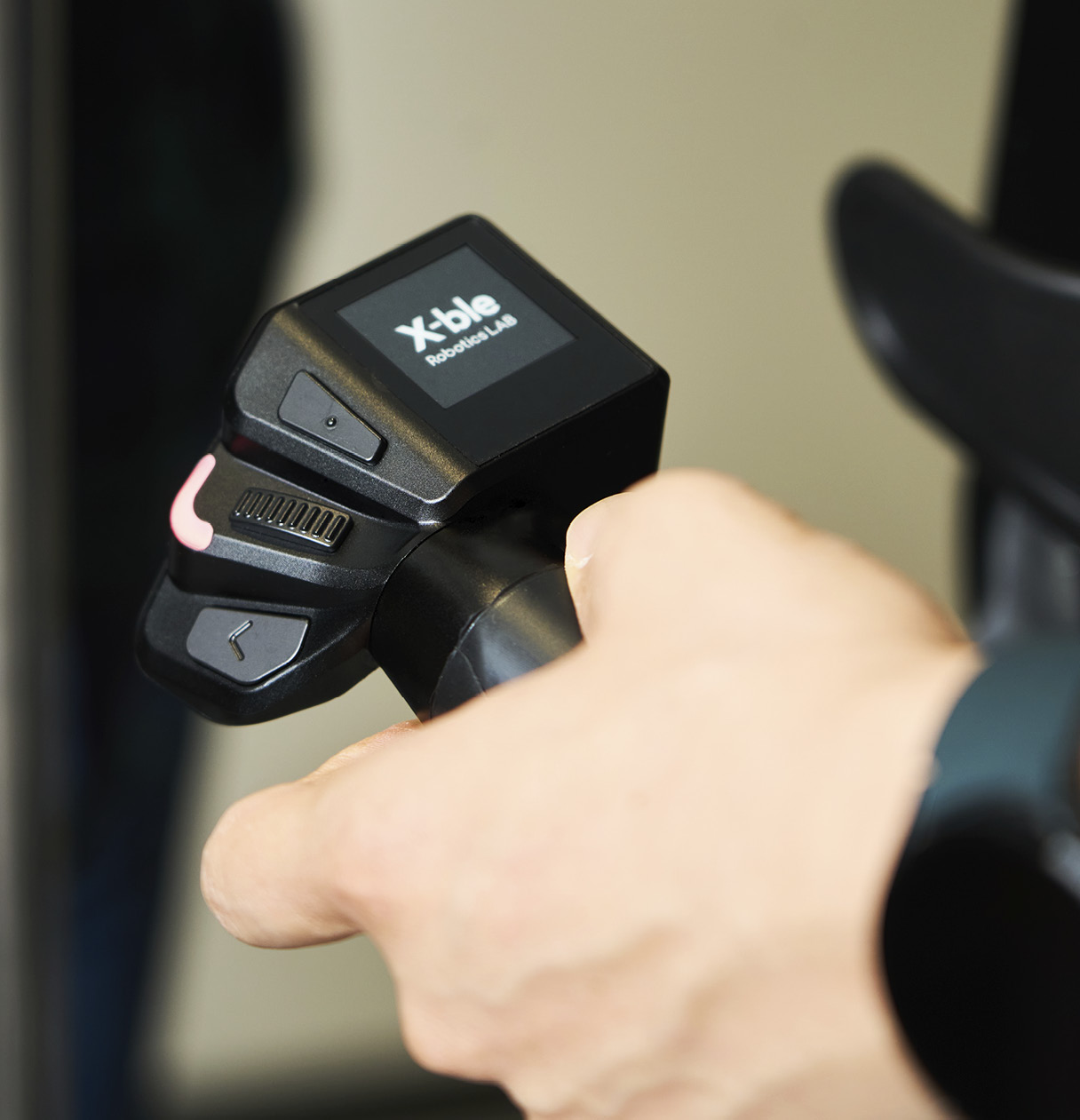
Q. Were there any improvements in the control technology of X-ble MEX through clinical trials?
Senior researcher Guk-hyun Aan | There were changes in the wireless communication rather than the control itself. The communication method was modified to prevent malfunctions caused by interference when multiple robots operate simultaneously in the same space. The control itself received favorable comments during the tests. When conducting usability tests of X-ble MEX with physical therapists in the United States, they showed high satisfaction, particularly regarding walking.

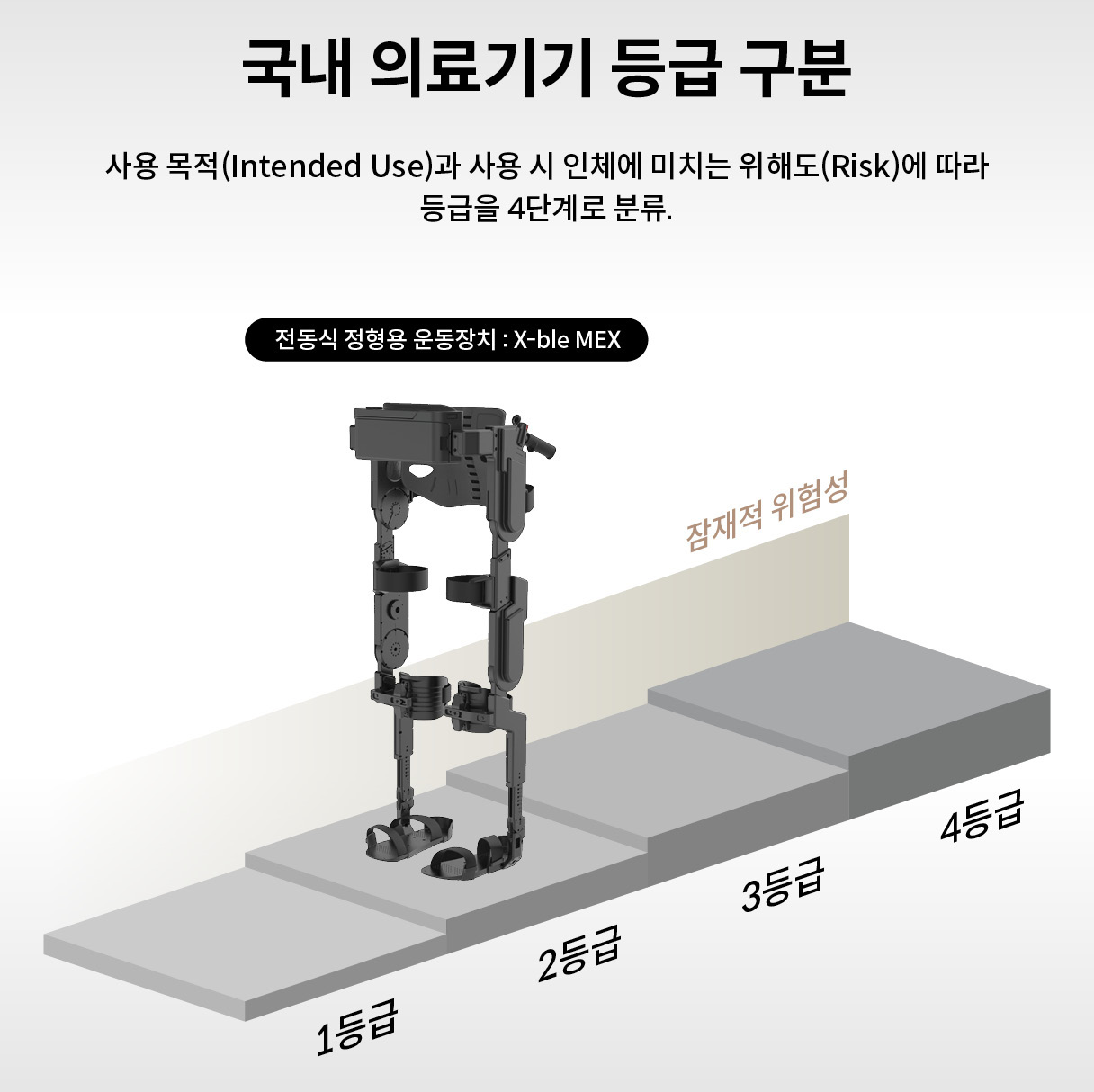
Q. X-ble MEX is the first medical device introduced by Hyundai Motor Group. What were the challenges?
Senior researcher Jong-wu Kim | Just like cars, medical devices also require certification. However, this was the first time Hyundai Motor Group sought medical device certification. Each step of the sales and approval procedures felt challenging, as if pioneering an uncharted path within the company. Medical devices are classified into four grades based on their purpose and impact on the human body. Since X-ble MEX is a medical wearable robot that operates according to the patient’s input, it was certified as a second-grade medical device in Korea. Additionally, we are currently pursuing FDA certification to introduce X-ble MEX to a wider world.
Q. How will the rehabilitation therapy-related research with X-ble MEX be conducted?
Senior researcher Jong-wu Kim | Due to the varying conditions of different patients, there is a need for diverse considerations regarding the utilization of the wearable robot. Furthermore, the opinions of healthcare professionals and patients who actually use X-ble MEX are essential. Therefore, we have signed a collaborative agreement with Seoul Asan Hospital and the Korea National Rehabilitation Center, and we donated X-ble MEX to support gait recovery programs for patients with walking disabilities. We hope that practitioners, researchers, faculties, and patients from Seoul Asan Hospital and the Korea National Rehabilitation Center can together create more useful and effective treatment methods.
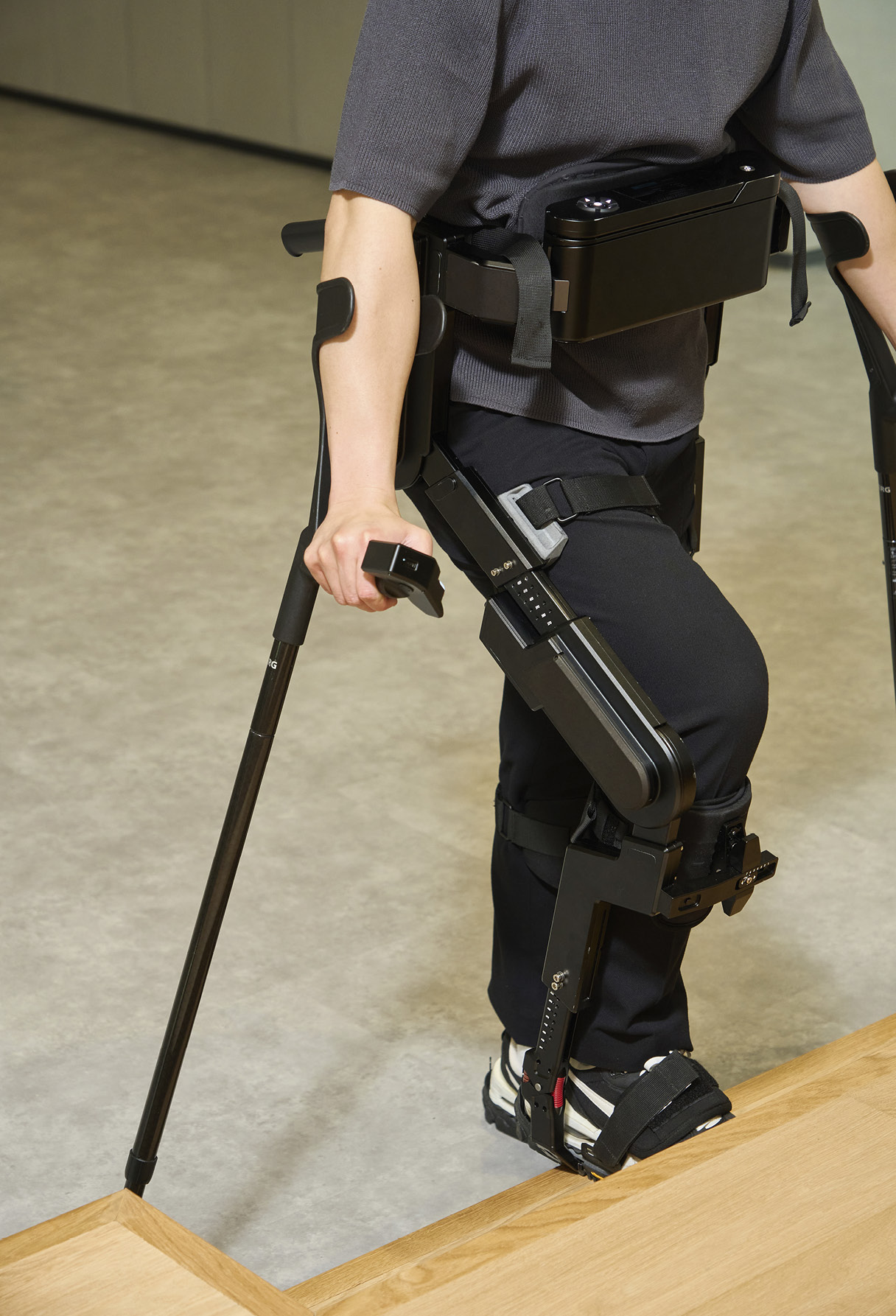
Q. With the technology of X-ble MEX, it seems possible to create a robot assistant for the elderly with significant joint damage. Do you have plans for that?
Senior researcher Jong-wu Kim | In order to enable the stable use of X-ble MEX by individuals with difficulties in maintaining left-right balance or with a certain level of anterior-posterior balance sense, we have limited the scope of this device’s usage. However, we also intend to explore various possibilities through clinical trials at Seoul Asan Hospital and the Korea National Rehabilitation Center. For example, we plan to evaluate its applicability not only for expanding the user base to include stroke patients and the elderly but also for therapeutic purposes. Above all, any medical devices must demonstrate its safety and effectiveness. And speaking of commercialization, we need to take the long view.
Q. Please tell us about the long-term plans of Robotics Lab.
Senior researcher Jong-wu Kim | The wearable robots being developed by Robotics Lab are roughly categorized into medical and industrial uses. In terms of medical applications, we plan to provide multifaceted support for the disabilities who have been struggling, aligning with Hyundai Motor Group’s social contribution perspective. For industrial wearable robots, we are currently developing and evaluating them to prevent musculoskeletal disorders among workers, and support their comeback to work after accidents or illnesses. First, we will try the prototypes inside the group, and we will release them to the public once the they are advanced enough.
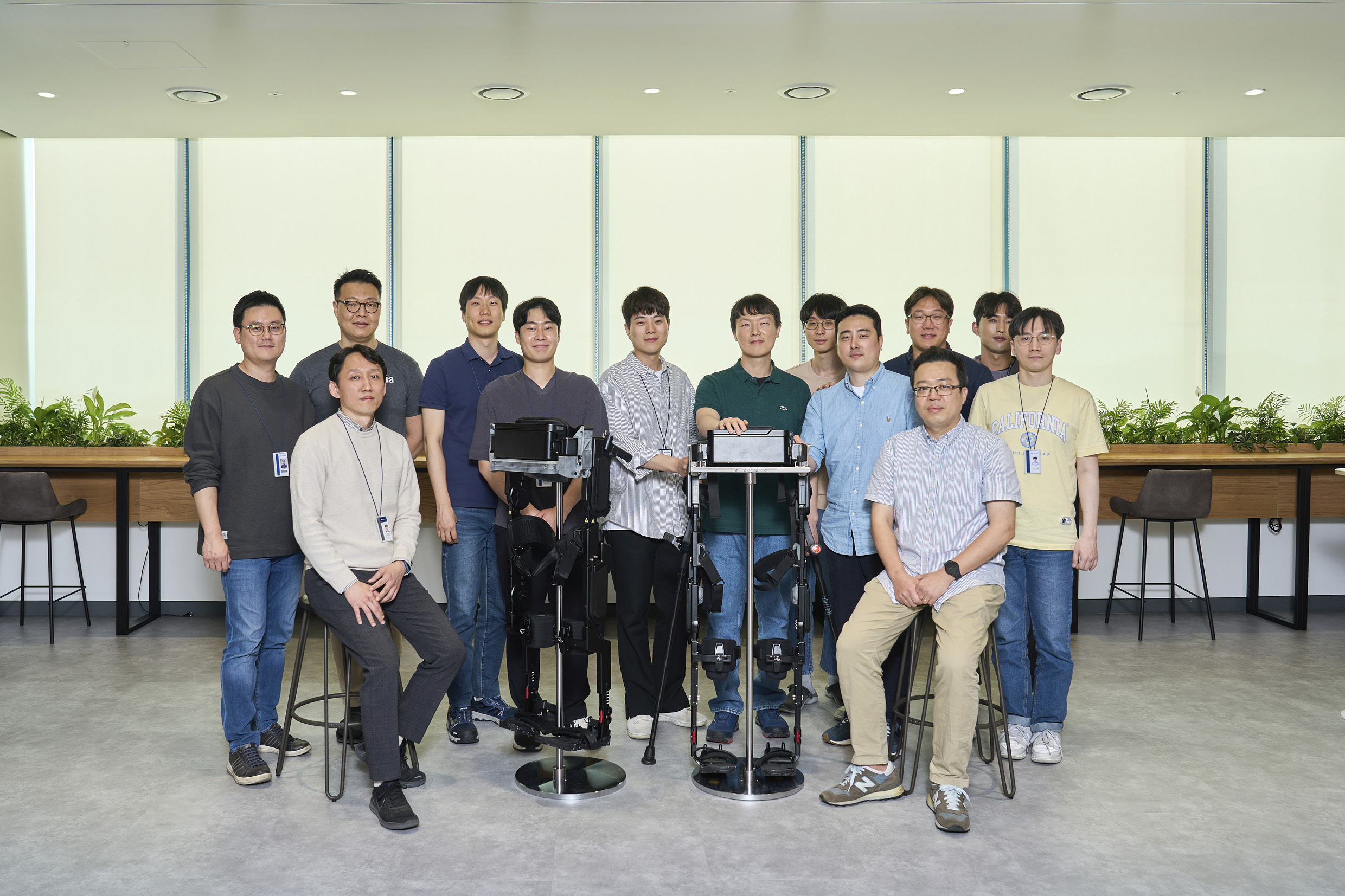
Hyundai’s philosophy of “Progress for Humanity” extends beyond automobiles in all directions. Hyundai plans to actively adopt various future technologies and continue its efforts to help people with mobility impairments. The expansion of mobility through robots would bring thrilling expectations to humanity. As time goes on, a wider range of mobility assistance robots will emerge. In fact, Hyundai has registered the trademark of the wearable robot integrated brand “X-ble” and is exploring ways to apply it in healthcare and other industries. And this would be why many are paying attention to HMG Robotics Lab.
Photography by Hyuk-soo Cho


Hyundai Motor Group, To The Moon
2022.11.03 6min read